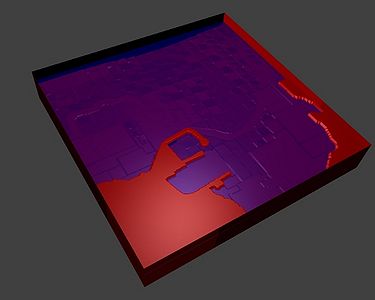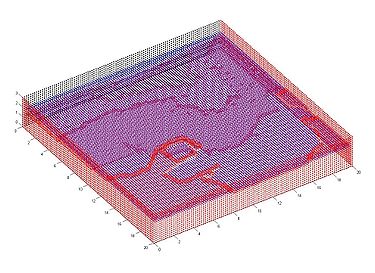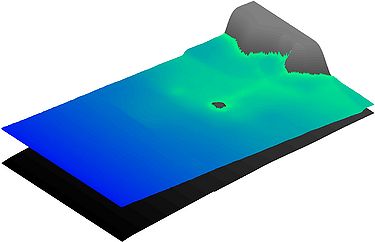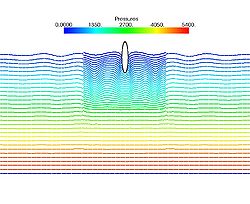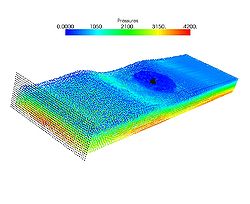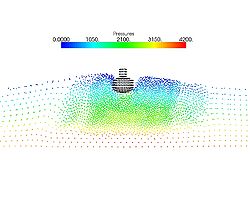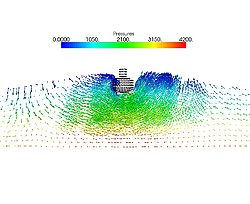







From SPHYSICS
Have you used SPHysics and developed a new add-on or development that you would like to share with other users? This page is a list of add-ons for SPHysics.
Contents |
Advanced Pre-Processing: Arno Mayrhofer

|
Arno Mayrhoferstarted working with SPHysics during his ERASMUS year at the University College Cork in Ireland. As part of a final year project, supervised by Dr. Gareth Thomas, he was investigating different types of wave power generators. Due to limitations inherent in SPHysicsGen at that time he implemented a program called MyGeo. It allowed him to create arbitrary geometries in 2-D SPHysics. His work, including the paper and the code, can be found at http://sci.amconception.de.
During an invited stay at the University of Vigo he started working on advanced preprocessing tools for 3-D SPHysics. Utilising Blender (http://www.blender.org) and Paraview he created a way of generating arbitrary complex geometries which is not only much more user friendly then his first work but also more powerful. All Blender generated meshes can be exported to SPHysics via a Python script that can be executed by just a single click. Due to the wide range of import formats in Blender it will also be possible to use many design input formats such as Autodesk (.dxf), 3D Studio (.3ds), Lightwave (.lwo), Milkshape3D (.ms3d) and many others. This will complement the SPHysics code and make the program attractive to engineers to tackle real life problems.
This code has now been released as part of version 2.2 for the serial version and will appear in the parallel version.
Real bathymetry at the Spanish coast that can now be simulated using SPHysics.
Solving the Shallow Water Equations (SWEs) using SPH: Dr Renato Vacondio
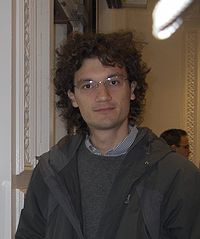
|
Dr Renato Vacondio obtained his PhD working on Meshless numerical methods in 2010 at the University of Parma (Italy) supervised by Prof. Paolo Mignosa. During his PhD he was invited to stay at The University of Manchester to work with Prof. P.K. Stansby and Dr Ben Rogers. They developed a Smoothed Particle Hydrodynamics numerical scheme for depth-averaged shallow water flows. The key innovations of this model are: the capability of simulating floodings over real bathymetry, inflow outflow boundary conditions, particle splitting to increase the resolution where is necessary, and finally an improved formulation for the stabilization term. The Shallow Water Equation version of SPHysics (SWE-SPHysics) will be released as open source as part of the SPHysics code late 201. Renato Vacondio is currently working with the SPHysics developer group to improve both the Shallow Water and the classical version of the SPHysics code solving the Navier-Stokes equations on topics such as particle refinement (splitting and coalescing) and inflow/outflow boundary conditions. For Publications, please see SPHYSICS_Publications
Tsunami inundation simulated using SWE-SPHysics.
Variable Particle Mass within SPH: Dr Pourya Omidvar
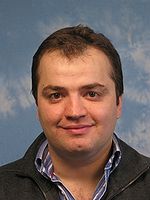
|
Dr Pourya Omidvar has been using the SPHysics code since 2006 first for his PhD at the University of Manchester, UK, where he investigated wave-body interactions in 2-D and 3-D. During his PhD, he introduced “Variable Particle Mass Distribution in SPH” to avoid simulations which need an extremely large number of particles or large computing resources. The variable particle mass technique has been applied to waves loading on fixed, heaving and free-motion objects with simple or complex shapes with a speedup 600% in some problems. Pourya joined the Laboratoire des Machines Hydrauliques at École Polytechnique Fédérale de Lausanne (EPFL), Switzerland, in October 2010 to use the SPHysics code in the application of hydraulic machines. He is now in Iran working as a university lecturer.
Variable Mass in 2-D and 3-D for heaving cylinder and wave energy converter Manchester Bobber.
Slices from 3-D Variable Mass simulations using parallelSPHysics, Left: particles, Right: Velocity Vectors as focused wave hits device.
